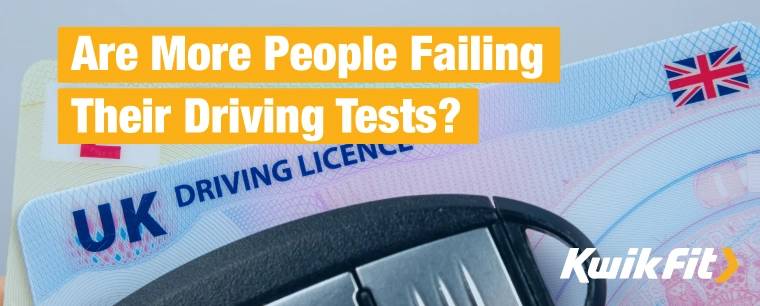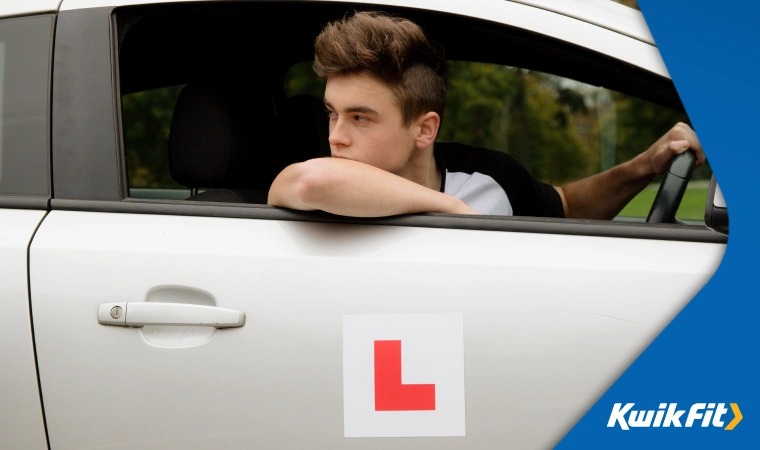Are More People Failing Their Driving Tests?
Jack Dreyer | Thursday 23rd May 2024 9:30am

Despite the fact there are more licence holders than ever, fewer young people are learning to drive — and, while many young people are still driving, it’s much lower compared to previous decades. We’ve discussed before why this might be the case before, but could the increasing number of young people without licences be related to the number of people failing the test itself?
Driving tests have changed dramatically over the years, getting much more difficult to pass. According to Government statistics only 48.4% of people were successful in passing their driving test between 2022 and 2023, meaning that over half of all learners will fail their first test.
So, if tests have gotten harder, are more people therefore failing their tests? If so, why? Read on to find out more.
How have driving tests changed?
In 1931, the first edition of the Highway Code was published, but it would take another four years before the first driving test to emerge. In 1935, a Mr J Beane was the first person to ever pass a driving test and it cost him seven shillings and sixpence, around £22 in today’s money.
A lot has changed since 1935, of course, and over the decades as cars became more complex, road markings more regimented, and laws more defined, the driving test had to be tweaked heavily to ensure drivers were safe and aware.
It took until 1996 for the separate theory test to be brought in, and, eventually, this was modernised in the early 2000s with touchscreen testing. As both the practical and theory tests were developed, new errors were added, certain tests were taken away (Arm signals used to be tested until 1977) and bigger testing points were included such as hazard perception in 2002.
In 2017, there were some major changes to the way testing was done by the Driver and Vehicle Standards Agency (DVSA):
- Sat Navs were introduced to most tests
- Independent driving time, using the Sat Nav usually, increased from 10 to 20 minutes
- Turning in the road and reversing around a corner were no longer tested. Instead, one of the following manoeuvres were introduced:
- Parallel parking at the side of the road
- Bay parking - either by driving in and reversing out, or reversing in and driving out
- Pulling up on the right-hand side of the road, reversing for two car lengths, and rejoining traffic
- Previously the “tell me, show me” test was carried out before the learner began driving; now, the “tell me” part is asked before driving and the “show me” part is asked during the driving process as a demonstration of knowledge around safety tasks.
In 2023, an additional change was introduced which was designed to ease the backlog of new drivers waiting to be tested. This included:
- People who fail their test will have to wait 28 days before retesting, it used to be 10 days
With all of these changes in recent years, plus the backlog of people waiting to be tested due to the COVID pandemic pausing tests, it could be easy to conclude that testing has become harder and, therefore, people are failing more often than before. But, how true is this, and what are the real reasons why? Read on to find out.

Why do people fail their driving tests?
Before we look at whether people are failing more than before, let’s explore the most common causes of driving test failures. This list is a general overview of the usual slip-ups new drivers make which might shine some light on how the modern testing could be tripping up more young people.
Junctions
The most common reasons for failures are because of junctions. There are so many issues which can come up in this simple manoeuvre, but impatience and nerves often get the better of drivers whilst they’re being tested — and it’s easy to forget some of the basics.
As we drive on the left-hand side of the road in the UK, turning right on a junction is particularly tricky and a common error zone. When it comes to junctions, some of the most common issues facing motorists include: failure to look in both directions before emerging, lack of or no observation at unmarked crossroads, positioning over the centre line, or emerging into oncoming traffic.
Road markings, traffic lights, and signs
Similar to turning on a junction, nerves could largely be blamed for people missing road markings, traffic lights, and signs. Some of these errors are very serious despite being only minor slip ups — but, missing these vital road rules and directions could cause serious accidents.
Some of the errors which could occur when navigating road markings and signs are driving through, or attempting to drive through, a red light, failing to wait for light changes, straddling white lines, or ignoring box junctions.
Related to this is any poor road positioning during normal driving, such as driving too close to or onto the kerb, or too far into the centre of the road. Veering is a common problem.
Steering, parking, and mirrors
This one won’t come as much of a surprise considering over half of young drivers find parking stressful (which may be linked to situational phobias and anxiety), but parking is a primary cause of errors, with mistakes such as parking too close to other vehicles, hitting the kerb, and poor clutch control.
Oversteering and understeering around corners, keeping your hand off the wheel for too long, or simply having your hands in the wrong position on the wheel are all common errors.
When it comes to moving off and checking mirrors, poor observation, failure to check blind spots, and failure to check mirrors are usual problems.

Are more people failing their driving tests?
On the whole, pass rates have remained fairly consistent since the last massive rules shakeup in 2017. There was a gradual decrease in passes between 2007 and 2017, but, since 2017, the number of failures on a first test has remained at just over 50%.
An even more startling figure is that around 12% of tests require physical intervention from the examiner for safety reasons — and, assuming that all of the 12% failed their test for a major error, that means nearly a quarter of all failures are serious enough to require physical intervention.
One of the main reasons for the recent spotlight on driving test failure rates is undoubtedly the testing backlog since the Pandemic. With so many people having to wait so long for a test, when new drivers do get the chance to be tested there is an added pressure because they don’t know when they may be able to do their test again. Add to this studies which show that young people in the UK tend to have the highest rates of anxiety, stress and nervousness in our modern society, and perhaps there could be some truth that young people are failing tests more often.
We’re here when you pass
Failure isn’t the end of your driving journey, there is still the possibility you could pass on your second, third, or even fourth attempt. There is currently no limit to how many tests you can take.
When you do pass your test, make sure to read our blog on tips for new drivers, and how to manage your car during your first year on the road. When you get your first car, the world suddenly opens up for you, but that comes with the responsibility to make sure your car is well-maintained, safe, and road-legal.
If things suddenly go wrong, or it comes to your MOT, you may be faced with an unexpected bill which could shake your finances. But, with the Kwik Fit club, you can wrap-up your costs with a predictable monthly payment. It’s the perfect plan for new drivers who want to make sure their car is serviced and looked after.
Find your nearest Kwik Fit centre and get in touch with us about your servicing needs.
Any facts, figures and prices shown in our blog articles are correct at time of publication.
Featured Articles
Is it Illegal to Drive With One Headlight?
Saturday 19th July 2025
Wondering if it’s illegal to drive with one headlight? Learn about the safety risks and penalties of illegal blown bulbs and why you should fix them promptly.
Air Con in EVs & Hybrids: Experts Answer Your Questions
Monday 30th June 2025
Does air con drain EV batteries? Can you use the air con while charging an electric car? Find out the answers to these questions & more from Kwik Fit’s experts.
Why Is Your Car Making a Noise? Fixes & Tips
Friday 13th June 2025
When your car starts making unexpected noises, it can certainly be quite disconcerting; it may be nothing to worry about, but here’s what you need to know.









